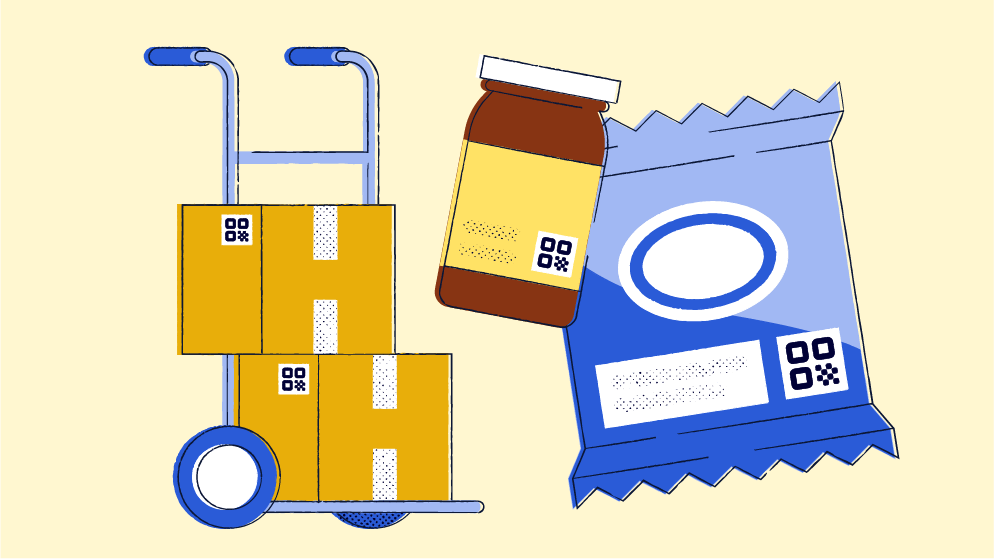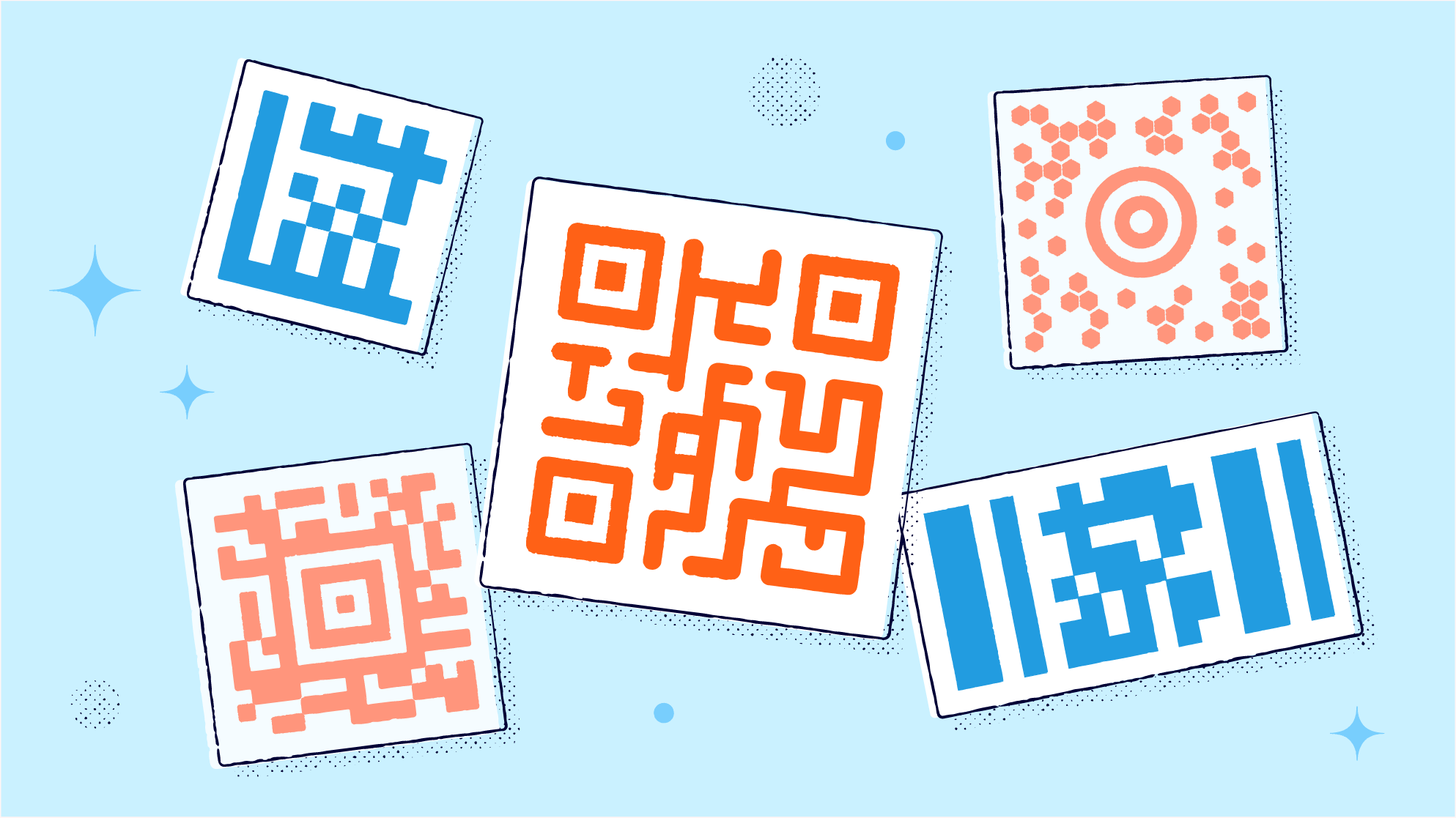
It may be surprising, but nearly every decision we make in our daily lives has an impact on the environment. Whether it’s hopping into our cars for a trip to the store or even buying a plastic water bottle on the go, these seemingly small choices carry significant weight when multiplied by billions of people. As headlines continue to underscore the urgency of this situation, it’s no wonder that consumers are actively seeking ways to reduce their footprint through their purchasing power.
For consumer packaged goods (CPG) brands in particular, adopting sustainable practices isn’t just the right thing to do—it’s also a strategic move benefiting brand reputation, customer loyalty, and your bottom line. Whether your brand is already well-known for its climate-conscious practices or is hoping to transition to more sustainable methods, QR Codes and sustainability go hand-in-hand.
Let’s explore how QR Codes give you a direct line to your customers from every package and display, enabling increased transparency, bolstering your brand’s sustainability efforts, and inviting customers to take part in green practices themselves.
The state of sustainability in CPG
From soap to snack foods, shoppers rely on CPG brands to meet a wide range of their daily needs—but what’s the environmental impact of these products?
According to an analysis by Boston Consulting Group (BCG), the agro-food supply chain—in which CPG companies play a major role—makes up around 31% of annual greenhouse gas emissions. Another study from the Visual Capitalist ranks “consumer staples” like food and personal products fifth out of 11 industries when it comes to carbon emissions.
Consumers are paying attention to these impacts, too. BCG found that 80% of consumers think about sustainability in their day-to-day purchasing decisions, and 68% of Americans say they’re willing to pay more for sustainable products, based on research from PDI Technologies. This trend was even stronger among younger generations, making sustainability an essential way for brands to build trust with them.
As consumer expectations continue to rise, it’s not enough for brands to just talk about sustainability or acknowledge their environmental impact. To secure consumer loyalty, CPG companies need to measurably decrease their carbon footprint and actively communicate these efforts. Some key steps involve the following:
- Increasing energy efficiency throughout the supply chain
- Limiting carbon emissions
- Reducing waste during the production and distribution processes
- Using renewable and recyclable packaging materials
- Ethical and transparent sourcing
- Socially responsible factories and working conditions
Today’s consumers demand sustainable practices from the brands they support and are also looking for greater transparency to fact-check these commitments. NielsenIQ found that 72% of consumers say transparency from food brands is important or very important to them and that shoppers are 17% more likely to buy from brands that are open about their ingredients and supply chain.
Going forward, tech that enables connected packaging—like QR Codes—is paving the way for brands to share more openly about how their products are made directly from every product sold. Luckily, this means that CPG companies now have the tools to step into the future by putting planet-friendly practices first—and QR Codes are a great place to start.

The role QR Codes play in sustainability
Ready to double down on environmentally friendly practices? Here are a few ways that CPG brands can use QR Codes to set themselves apart and show consumers that they’re serious about sustainability.
1. Sharing transparently about production and distribution
How are your products made? Where do they come from? And, most importantly, how do they impact the world? Consumers want to know the answers to burning questions like these, so brands should focus on striving for more transparency about what goes on behind the scenes.
Climate-conscious brands should be proactive about sharing details on their production and distribution processes, ethical sourcing, and energy-efficient supply chains. As more brands share openly about their sustainability efforts, transparency will drive accountability, and the CPG industry as a whole will likely become more green.
With the quick scan of a QR Code, customers can access web pages, resources, or videos that show your brand’s commitment to sustainability every step of the way. The retail industry’s upcoming transition from UPC barcodes to 2D barcodes like QR Codes offers an ideal opportunity for brands to embrace transparency and offer in-depth production information, right from every package.
Increased transparency also offers major marketing potential to build trust with your customers. Shoppers who prioritize sustainable purchases go out of their way to find brands that are open about green practices, making them more likely to become customers for life.
2. Reducing printed materials
From weekly ads and paper coupons to instruction manuals, shopping can be a paper-intensive experience. Every printout has an environmental impact, from the paper used to create it to the waste when someone throws it away.
Instead of contributing to mounting paper waste, brands can use QR Codes on in-store displays or packages to give customers quick and easy access to information with a simple scan. In one fell swoop, you can reduce your printed materials and environmental impact. What’s more, for in-depth information like step-by-step instructions, a QR Code lets you offer not just a digitized version of the printout, but other media formats like a short video or infographic.
Need to provide details on or outside a package for shoppers while they’re deciding to purchase? Even when your packaging real estate is limited, QR Codes pack a big punch. They let you take shoppers to an entire webpage of FAQs or product comparisons, all without using more printed materials or adding to your carbon footprint.
3. Helping customers with sustainable disposal
Do you take responsibility for how your product is disposed of after purchase, or do you consider it no longer your concern once it’s sold? It’s easy to lean toward the latter option—after all, you can’t control how customers behave after they’ve used your product.
But brands that stand out and lead the pack with their sustainable practices are taking ownership of consumer behaviors. They give customers quick and easy options and instructions to dispose of packaging—or products themselves—and they’re using QR Codes to do it.
Invite customers to take an active role in recycling their CPG goods by offering details on where and how to properly dispose of materials via QR Code, straight from the package. You can even incentivize them with a rewards program designed to encourage sustainable behavior and drive customer loyalty. When you go the extra mile to help consumers go green with your products, your sustainability commitment turns from words into actions, and consumers take notice.
4. Driving climate philanthropy
Some brands go the extra mile with their commitment to sustainability by raising awareness and funds for climate initiatives. Philanthropic brands might even start their own foundations to support sustainable practices or care for people who are impacted by climate injustice, like soap brand Dr. Bronner’s and its Migrant Justice Initiative.
CPG brands can use QR Codes to instantly connect consumers to their efforts to give back straight from packages or displays. Each scan can tell shoppers how brands are funding sustainable practices to help them make informed (and ethical) purchase decisions. QR Codes are also a great way to invite shoppers to donate directly to philanthropic initiatives, especially in times of urgent need. Consumers get to play a role in sustainability, brands show their commitment to giving back, and the world gets a little greener.

QR Codes for sustainability: 7 examples
If you need inspiration for your brand’s sustainability efforts, look no further. These seven brands are ideal examples of using QR Codes to connect with customers and not just talk about climate-friendly practices, but also take action.
1. Puma
In light of the transition to 2D barcodes in the coming years, Puma is blazing a trail as the first major brand in the U.S. to introduce a QR Code as its new barcode. The footwear brand is using the code to share information about the materials used in its shoes, along with its sustainability efforts and commitment to human rights.
2. Midwest Dairy
Greater transparency is an important ingredient in driving sustainability across every industry, and the Midwest Dairy Association has been doing its part for close to a decade by using QR Codes to share information with consumers. QR Codes on dairy products are updated weekly to provide the latest information on the farms’ production practices, animal care, and which local farm the products came from.
3. Patagonia
Outdoor clothing brand Patagonia is well-known for its environmentally friendly practices, like making 98% of its product line from preferred fibers, including recycled materials. The brand also uses QR Codes to minimize the use of single-use tags. Rather than printing care instructions, material details, and activism initiatives on paper, Patagonia adds a QR Code to its packaging to link customers to this information. The company’s QR Code usage and other efficient practices save 100,000 pounds of paper used for tags and product inserts annually.
4. Samsoe Samsoe
QR Codes are the key to the future of sustainable fashion. Scandinavian clothing brand Samsoe Samsoe uses QR Codes on its clothing tags to support its product life cycle initiatives. In addition to investing in sustainable production, the company introduced QR Codes to make reselling clothing items through Meta’s Instagram and Facebook marketplaces more convenient for customers. By making product information readily available, Samsoe Samesoe aims to extend each item’s usage and ensure it’s worn as long as possible, which the brand says is another important part of clothing sustainability.
5. Mondelez
Australian consumers can now enjoy their favorite chocolate treat and save the world along the way. Mondelez International has launched Snacking Right, a QR Code on each package that takes customers to updated recycling and disposal information. The QR Code also shares the company’s commitments to sustainable sourcing and working toward a circular packaging economy—which customers take part in with each wrapper they recycle.
6. Scrub Daddy
Scrub Daddy, the sponge that won hearts with a 2012 appearance on Shark Tank, is making sustainability-minded consumers smile, too, through its Recycling Rewards Program. Each package features a QR Code with information about how to send sponges back to the brand instead of throwing them away. Scrub Daddy uses a unique process to turn the foam into fuel, so the recycling process reduces waste and emissions. For every sponge customers recycle, they even earn money toward Scrub Daddy products and merchandise.
7. Daily Harvest
Health-forward brand, Daily Harvest, is on a mission to help customers eat more fruits and veggies every day—and on top of getting people to eat their greens, the brand is contributing to a greener world. Daily Harvest partnered with Kroger stores across the U.S., adding QR Codes to freezer door clings so shoppers can learn more about the brand and its sustainability efforts. Customers don’t just learn about Daily Harvest, though—they get to be part of doing good. For every QR Code scan, the brand donates $5 to accelerate its work in supporting regenerative farms.
A greener world, one scan at a time
Becoming a more efficient and environmentally friendly brand probably won’t happen overnight, but the work has to start somewhere. Begin by assessing how your processes and products affect the environment around you, and take meaningful steps to limit your impact on the planet. Then, share those changes with your audience to build trust and set an example of transparency for other brands to follow.
QR Codes offer a connection point between brands and consumers, advancing transparency, philanthropy, and sustainability in every interaction. With each product and package, CPG brands can deepen relationships with customers and show their commitment to building a healthier and safer future for our planet.